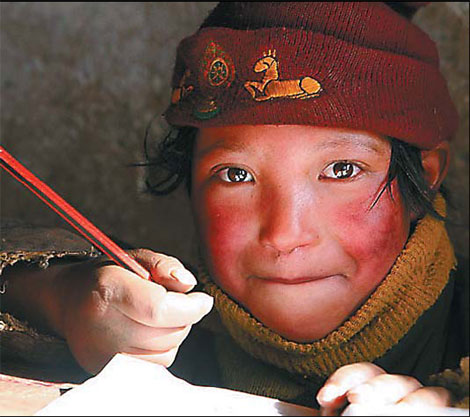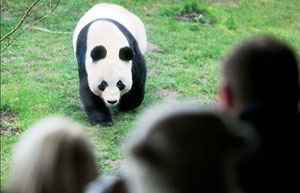A Canadian mom to Tibetan children
Updated: 2011-12-23 10:00
By Liu Jun (China Daily)
|
|||||||||
 |
|
Canadian author Lisa Carducci's My Tibetan Daughter reveals the harsh realities of rural life in the country's less developed regions. Provided to China Daily |
Canadian writer Lisa Carducci's new book, My Tibetan Daughter, might not be an easy read but it provides objective glimpses of Tibetan life in the country's less developed regions.
The author painstakingly provides statistics on rural life and never shows any self-congratulation for what she has achieved: Winning the hearts of ordinary Tibetans because she genuinely cares about the well-being of poor children.
She has supported a number of rural children through their educations, and the book focuses on two girls and a few schools.
Most visitors to western China, where most Tibetans live, are transient observers and would be satisfied with fleeting images caught by their cameras.
But not so Carducci, a painter and poet, eloquent in French and Italian, who has been in China for more than 20 years and published dozens of books that comment on Chinese society.
The first part of the book offers a happy portrait of a Tibetan family in northwestern Yunnan province. Carducci traces the story of Gemar Yumtso, who desperately needed support to continue her studies at the Institute of Tibetan Medicine in Lhasa.
Particularly striking is how determined Carducci was to reach Gemar Yumtso's mountain-locked home despite the arduous roads. She went there in 2006 and 2010, and marked out the changes in her text with a different color for readers' convenience.
If her meticulous recording of the basic facts of life in the village seems dull, her occasional poems, particularly those about the sturdy horse that carried her to the village, inject much humor and life.
The second part of the book reveals the harsh realities of basic education in Qinghai province.
As there are an increasing number of charity groups trying to help the children get a decent schooling on the Qinghai-Tibet Plateau, Carducci's careful account of her experience is particularly valuable.
Dissatisfied with the response of official organizations, she got in touch with needy schools and teachers directly to learn firsthand about the situation and ensure that donations would reach the most desperate children.
At a time when many people scoff at the lavish projects of some official charity organizations, or wait for the government to upgrade education facilities, Carducci has taken the lead and her books are full of inspiration for those of us wanting a better future.
"Because you accepted to cover my education fees, you have lightened again my extinguished lamp of the future and brought back a smile on my parents' faces," wrote Gemar Yumtso, who is now working as an accountant in a remote village in Qamdo, Tibet.
My Tibetan Daughter by China Intercontinental Press is graced with hundreds of photos the author took during her trips.











